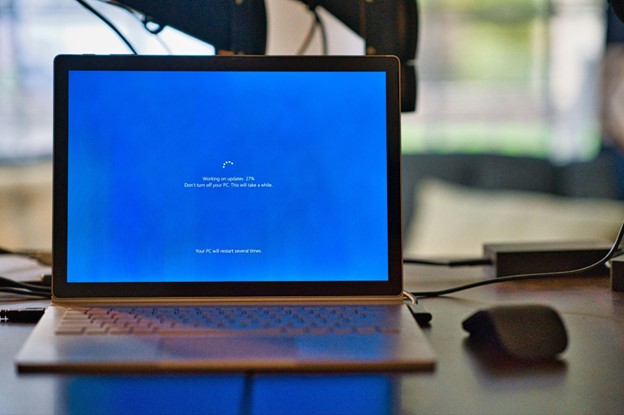
Linux, Windows, and MacOS are the three most prominent operating systems (OS) in the digital world, each offering unique features and experiences to users. Understanding their differences is critical to choosing the right OS for individual needs and preferences.
Linux, in particular, is renowned for its strong security features and open-source nature, allowing for extensive customization. This makes it a popular choice for users focused on security and those who value the ability to tailor their operating system to their specific needs. While VPN compatibility is a standard feature across all major operating systems, including Linux, the robustness of Linux combined with the added security of a VPN, such as PIA, can provide an enhanced layer of privacy and data protection, making it a compelling option for security-conscious users.
Linux: An Open-Source Powerhouse
Developed in 1991 by Linus Torvalds, Linux has evolved into a highly versatile and robust OS cherished for its open-source nature. This allows many developers to modify and distribute their versions. Linux’s key strength lies in its incredible customizability, with popular distributions like Debian, Ubuntu, Mint, Fedora, and Arch Linux catering to different user needs. Known for its stability and security, Linux rapidly responds to vulnerabilities, offering an efficient and resource-optimized experience.
Windows: The People’s Choice
Since its inception in 1985 by Microsoft, Windows has become the most widely used OS worldwide, mainly for personal computing. Its evolution from a text-based MS-DOS to a user-friendly interface with Windows 1.0 marked a significant leap. Windows is known for its intuitive graphical user interface, making it easy for users to navigate through their computers. Its features, like a start menu, Cortana (Microsoft’s voice-activated virtual assistant), built-in antivirus, and automatic file backups, enhance user experience, security, and convenience.
MacOS: The Blend of Elegance and Efficiency
Apple’s MacOS, initially released in 1984, set the standard for graphical user interfaces in personal computing. Built on a UNIX-like foundation, MacOS is exclusive to Apple hardware like MacBooks and iMacs. It is known for its sleek interface, efficient file management, iCloud integration, and Siri (Apple’s virtual assistant). MacOS provides a harmonious and secure environment, especially when used with other Apple devices.
Comparative Analysis: Linux vs Windows vs MacOS
Choosing between these OSs involves considering various factors like file systems, ease of use, security, performance, and cost.
File Systems:
Linux and MacOS use a UNIX-based file system, organizing everything in directories stemming from a root directory.
Windows uses a drive-based system, storing files in different drives and folders.
Ease of Installation:
Linux installation can be more technical, requiring knowledge of creating bootable devices.
Windows often comes pre-installed on PCs and offers straightforward installation.
MacOS comes pre-installed on Apple devices with easy updates.
Security and Stability:
Linux is renowned for its security and stability, benefiting from its open-source nature.
MacOS is also secure and stable, with fewer frequent updates.
Windows, while offering good security, is more vulnerable due to its popularity.
Performance and Efficiency:
Windows is versatile and efficient, supporting a wide range of applications.
MacOS offers excellent integration with Apple’s ecosystem, benefiting creative professionals.
Linux, while efficient, may have limited software compatibility compared to Windows and MacOS.
Cost:
Linux is mostly free, though some distributions offer paid versions.
Windows uses a freemium model, with the full version costing around $150.
MacOS is free but requires investment in Apple’s premium hardware.
Cultural Impact and User Base:
Linux appeals to those interested in technology and software, offering a deep understanding of OS workings.
MacOS is popular among creatives thanks to its array of editing and creative tools.
Windows has a diverse user base, from general consumers to corporate environments.
Choosing the Right OS
Your OS should align with your specific needs, preferences, and the type of applications you use. Windows is ideal for general users and gamers, and Linux suits programmers and tech enthusiasts. At the same time, MacOS is the go-to for creatives and those deeply invested in the Apple ecosystem.
Each OS has its strengths and weaknesses, making them suitable for different user profiles. For instance, Linux’s security and open-source nature make it a favorite among developers. In contrast, Windows’ user-friendliness and compatibility make it the choice for everyday use. MacOS, with its seamless integration with other Apple products and a focus on creative tools, appeals to a specific user base. In conclusion, the choice between Linux, Windows, and MacOS comes down to personal preference, the user’s specific requirements, and the environment in which the OS will be used. While Linux offers customization and security, Windows provides compatibility and ease of use. MacOS delivers a refined experience tailored to Apple’s ecosystem. Understanding these nuances is essential for making an informed decision that aligns with individual needs and preferences.




